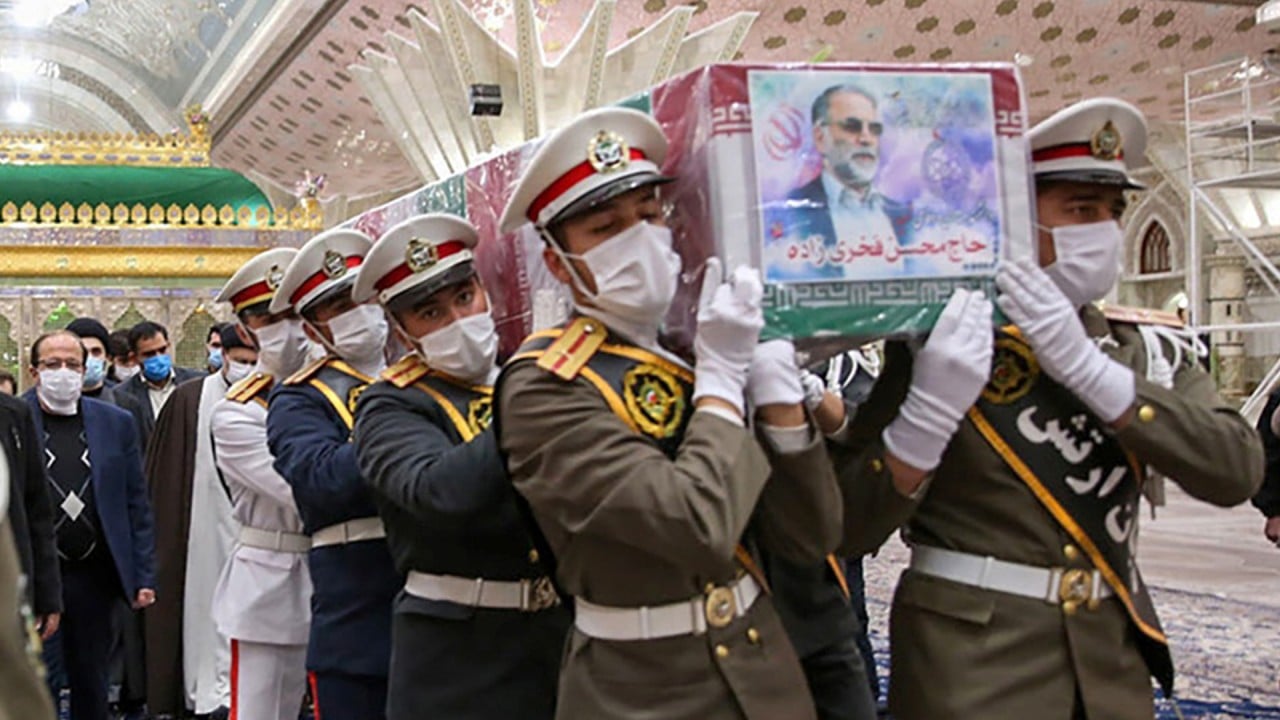
Iran’s Natanz nuclear facility hit by ‘suspicious’ blackout, a day after starting up advanced centrifuges
- Media reports indicate a cyberattack caused the power failure the day after Iran said it had begun mechanical tests on its newest advanced nuclear centrifuge
- Since January, Iran has been enriching uranium at up to 20 per cent purity, a step away from weapons-grade levels, though insisting it has no desire to develop a nuclear weapon
As Iranian officials investigated the outage, many Israeli media outlets offered the similar assessment that a cyberattack darkened Natanz and damaged a facility that is home to sensitive centrifuges. While the reports offered no sourcing for the evaluation, Israeli media maintains a close relationship with the country’s military and intelligence agencies.
If Israel caused the blackout, it further heightens the tensions between the two nations already engaged in a shadow conflict across the wider Middle East.
It also complicates efforts by the US, Israel’s main security partner, to re-enter the atomic accord aimed at limiting Tehran’s programme so it could not pursue a nuclear weapon if it chose. As news of the blackout emerged, US Defence Secretary Lloyd Austin landed in Israel on Sunday for talks with Netanyahu and Israeli Defence Minister Benny Gantz.
US defence chief in Israel to discuss arms supplies, Iran
Power at Natanz had been cut across the facility comprised of above-ground workshops and underground enrichment halls, civilian nuclear programme spokesman Behrouz Kamalvandi told Iranian state television.
“We still do not know the reason for this electricity outage and have to look into it further,” Kamalvandi said. “Fortunately, there was no casualty or damage and there is no particular contamination or problem.”
Asked by the state TV correspondent if it was a “technical defect or sabotage”, Kamalvandi declined to comment.
Malek Shariati Niasar, a Tehran-based lawmaker who serves as spokesman for the Iranian parliament’s energy committee, wrote on Twitter that the incident was “very suspicious,” raising concerns about possible “sabotage and infiltration”. He said lawmakers were pursuing details of the incident as well.
The Vienna-based International Atomic Energy Agency, which monitors Iran’s programme, said it was “aware of the media reports”, but declined to comment.
Natanz was largely built underground to withstand enemy airstrikes. It became a flashpoint for Western fears about Iran’s nuclear programme in 2002, when satellite photos showed Iran building its underground centrifuges facility at the site, some 200km (125 miles) south of the capital, Tehran.

Natanz suffered a mysterious explosion at its advanced centrifuge assembly plant in July that authorities later described as sabotage. Iran now is rebuilding that facility deep inside a nearby mountain.
Israel, Iran’s regional archenemy, has been suspected of carrying out that attack as well as launching other assaults, as world powers now negotiate with Tehran in Vienna over its nuclear deal.
Iran also blamed Israel for the killing of a scientist who began the country’s military nuclear programme decades earlier. The Stuxnet computer virus, discovered in 2010 and widely believed to be a joint US-Israeli creation, once disrupted and destroyed Iranian centrifuges at Natanz.
“It’s hard for me to believe it’s a coincidence,” said Yoel Guzansky, a senior fellow at Tel Aviv’s Institute for National Security Studies, of Sunday’s blackout. “If it’s not a coincidence, and that’s a big if, someone is trying to send a message that ‘we can limit Iran’s advance and we have red lines.’”
Israel has not claimed any of the attacks, though Prime Minister Benjamin Netanyahu repeatedly has described Iran as the major threat faced by his country in recent weeks.
China champions Iran sanctions relief as Vienna meeting seeks to bring US back to nuclear deal
The incident came after Iran said on Saturday it had begun mechanical tests on its newest advanced nuclear centrifuge.
Iran’s IR-9 centrifuge, when operational, would have the ability to separate uranium isotopes more quickly than the current centrifuges being used, thereby enriching uranium at a faster pace. The announcement carried on state television came on Iran’s 15th annual “Nuclear Day”.
The IR-9’s output is 50 times quicker than the first Iranian centrifuge, the IR-1. The country also announced it had launched a chain of 164IR-6 centrifuges on Saturday, and is also developing IR-8 centrifuges.
Since January, Iran has been enriching uranium at up to 20 per cent purity, a technical step away from weapons-grade levels, though Iran’s leadership insists the country has no desire to develop a nuclear weapon.
Former US President Donald Trump pulled the United States out of the nuclear accord in 2018, accusing Iran of failing to live up to the agreement, opting for what he called a maximum-pressure campaign of stepped-up US sanctions and other tough actions.
Iran responded by intensifying its enrichment of uranium and building centrifuges in plain violation of the accord, while insisting that its nuclear development is for civilian not military purposes.
Israel says Iran still maintains the ambition of developing nuclear weapons, pointing to Tehran’s ballistic missile programme and research into other technologies. Tehran denies it is pursuing nuclear weapons, and says its nuclear programme is for peaceful purposes.
Iran’s stockpile of 20 per cent enriched uranium has reached 55kg (121 pounds), moving its nuclear programme closer to weapons-grade enrichment levels. The amount of the material was 17kg in January.


